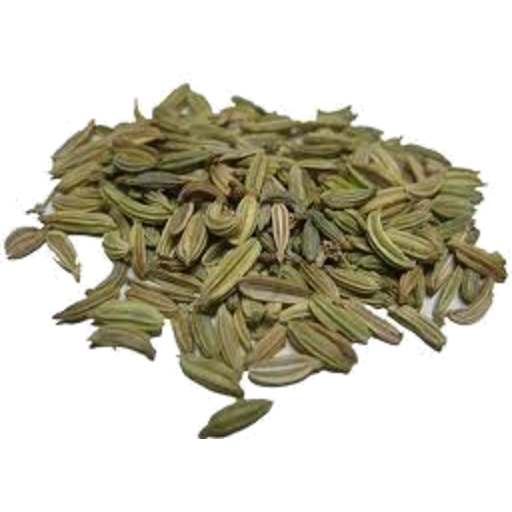Caulophyllum 6c
$19.95
each

Description
Technically, fennel seeds are not seeds at all, but actually the fruits of the sweet fennel plant, an herb which has been cultivated for culinary use for thousands of years. However, most cooks call the fruits “seeds” by convention, since they are small and usually sold in a dry form which looks exactly like a seed. There are many culinary uses for fennel seed, especially in Mediterranean and Indian cuisine. Many stores stock fennel seed, typically dry and whole. It can also be easily grown in any garden in a temperate zone, although fennel has a tendency to take over, so the plant should be encouraged with care. There are several different cultivars of the fennel plant, which is also called Foeniculum vulgare. One cultivar, Florence fennel or finocchio, is cultivated for use as a vegetable. It produces a large bulb and thick stalks which can be cooked like a root vegetable. Sweet fennel, on the other hand, is a bulbless fennel which produces green fronds and fruits, and it is used like an herb rather than a vegetable. Fennel is usually grown as an annual, since it does not do well in the cold. The plant smells like anise or licorice, and has feathery fronds of foliage with umbels of bright yellow flowers. The seeds are usually allowed to dry on the plant, which is gently shaken over dishes or clothes to release the seeds once they have matured fully. Once harvested, the seeds are picked through and then packaged. They can be eaten or used to start new fennel seedlings. In Italian cuisine, fennel seed is often used in pasta sauces, for a burst of anise-like flavor. It pairs well with a number of sauce ingredients, and is typically used whole and toasted so that it will be intensely flavorful. Indian and Asian dishes also call for fennel, both whole and ground. Egypt and some North African countries incorporate fennel seed into their cuisines as well. Since fennel seed looks and smells a great deal like anise seed, many cooks use the two interchangeably. It is a good idea to clearly label both spices to avoid confusion, since anise is more pungent. In addition, fennel aids digestion, while anise does not. As with many spices, fennel does best in an airtight container in a cool dry place, and it should not be exposed to light. Generally fennel seeds lose their potency after six months to a year, although they can be toasted to revive some of their flavor. Latin Name: Foeniculum vulgare Name: Fennel seed Part Used: The seeds Also used for: stomach aches & indigestion colic & gas pain intestinal cramps lack of milk production/flow for nursing mothers childhood colic – safe to use with infants digestive – warming coughs and respiratory problems Flavour: Aromatic, and sweet – very easily administered to children, very tasty in teas for adults. Constituents: The whole complex of primary plant constituents and a characteristic array of secondary plant constituents are present. Pharmacologically important constituents include volatile oil, major components of which are anethole and fenchone, flavonoids, coumarins Actions: carminative aromatic digestive anti-spasmodic anti-inflammatory galactogogue hepatic Indications: Fennel is an excellent stomach and intestinal remedy which relieves flatulence and colic whilst also stimulating the digestion and appetite. It is similar to Aniseed in its calming effect on bronchitis and coughs. It may be used to flavor cough remedies. Fennel is thought to increase the flow of milk in nursing mothers. Externally the oil eases muscular and rheumatic pains. The infusion may be used as an eye wash or compress to treat conjunctivitis and inflammation of the eyelids (blepharitis). Preparations & Dosage: Pour a cup of boiling water onto l-2 teaspoonfuls of slightly crushed seeds and leave to infuse for l0 minutes. This should be drunk three times a day. To ease flatulence, take a cup half an hour before meals. Tincture: Take 1-2ml of the tincture 3 times a day. In Australia, it is a violation of TGA regulations to list any therapeutic claims for any medication, natural or orthodox prescriptive, without TGA approval. For further information about this herb, we recommend doing your own thorough research, such as using any links provided or reliable researched websites http://www.rain-tree.com/plistbot.htm http://www.australiannaturaltherapistsassociation.com.au/ http://www.herbmed.org/ Disclaimer: The information contained here is intended for educational purposes only. It is not provided in order to diagnose, prescribe, or treat any disease, illness or injured condition of the body and the author, publisher, printer and distributors accept no responsibility for such use. All herbs should be taken with care whether topically or internally. Please skin test if using it topically and discontinue use in cases of rnegative reactions. Unless taken as a food/tea, please always take internally under proffesional supervision & consult your practitioner if symptoms persist or you have any concerns including drug/herb interactions. Please consult with a professional herbalist or your doctor if you are taking any medications to check for herb/drug interactions.
Owen Homeopathics

